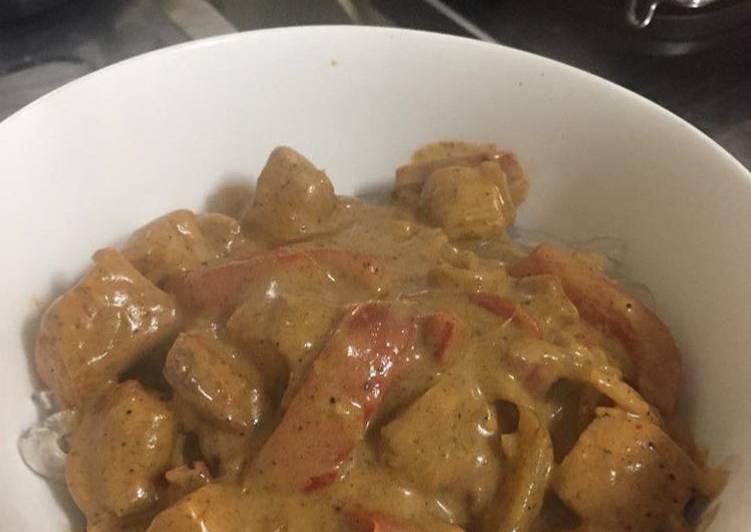How to Make Tasty Pork stew and shirataki noodles
Pork stew and shirataki noodles. Take the pork out of the marinade, shake off excess marinade, and stir fry in the wok or skillet; season with salt and pepper. Add the corn starch to the marinade and whisk to dissolve. Add the noodles and marinade, and bring to a boil to thicken sauce.
 The shirataki noodle is a zero carb Japanese noodle, that is filling. When made with a lovely side. It brings the noodles to life. You can have Pork stew and shirataki noodles using 7 ingredients and 5 steps. Here is how you achieve that.
The shirataki noodle is a zero carb Japanese noodle, that is filling. When made with a lovely side. It brings the noodles to life. You can have Pork stew and shirataki noodles using 7 ingredients and 5 steps. Here is how you achieve that.
Ingredients of Pork stew and shirataki noodles
- Prepare 200 g of dry shirataki noodles.
- Prepare 3 of medium pork chops.
- It's 1 of red pepper deseeded and sliced.
- Prepare 1/4 of white onion chopped.
- Prepare 150 g of coconut cream.
- It's 1 teaspoon of sweet chilli.
- Prepare to taste of Salt and Pepper.
Stir in the pork, carrots, and corn. Cook the egg noodles according to package directions and spoon evenly into four serving bowls. Spoon the stew over the noodles, and enjoy! Keto chicken stir-fry with shirataki noodles.
Pork stew and shirataki noodles step by step
- Place your shirataki noodles in hot water then boil for 10-15 min till firm but tender to the bite remove from hot water once cooked and set aside.
- Chop the pork into cubes, and fry for 5 minutes until cooked remove from pan and set a side..
- Add vegetables and fry till soft in pan for 5-7 minutes add coconut cream and bring to a boil. Until it has been reduced to a thicker consistency.
- Add chicken to the sauce that you have made, add salt and pepper to your taste.
- Plate your noodles and sauce and enjoy!.
Asian fast food at its best, in the comfort of your own kitchen. Naturally gluten-free shirataki noodles are the secret ingredient in this tasty, healthy—and quick. Largely composed of water and dietary fibre, they are very low in calories. Slightly coloured type is called 'Itokonnyaku'. The noodles taste like cellophane noodles but thicker, quite similar to Korean Daang Myun noodles which are usually used to make Japchae, but slightly chewier.